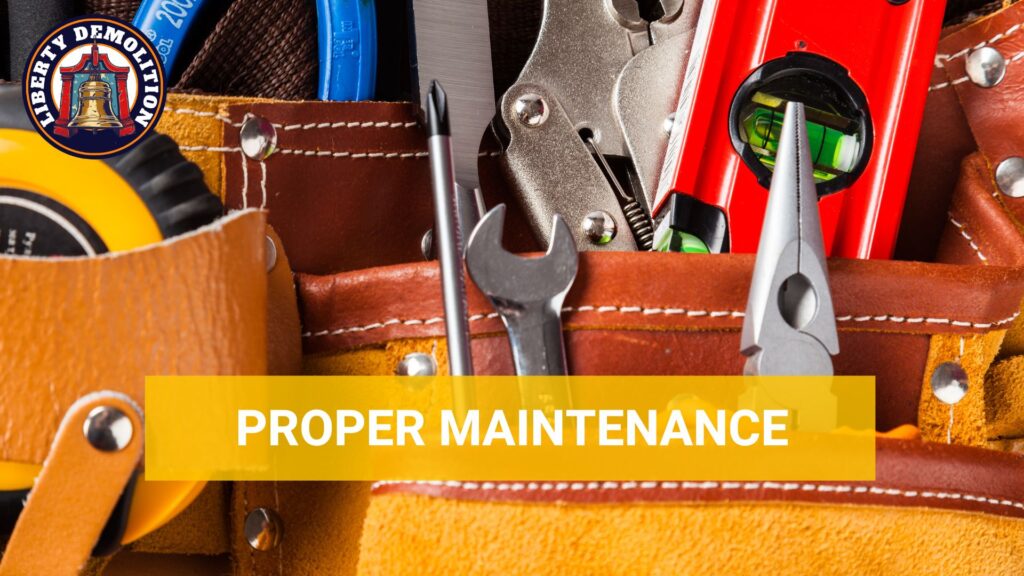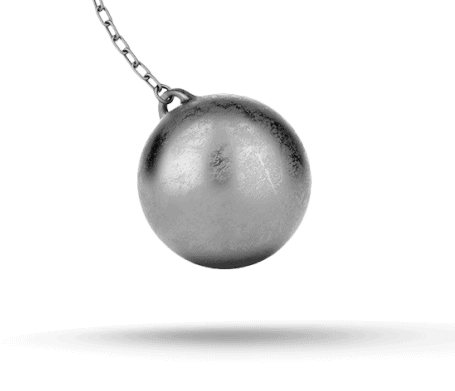A demolition hammer 5kg is a power tool used for breaking hard materials like concrete, brick, and other masonry surfaces. Designed for heavy-duty tasks, it is lightweight enough for easy maneuverability while still delivering a powerful punch.
Curious about how a demolition hammer works? Read on to learn more.
What Is a Demolition Hammer?
A demolition hammer, often referred to simply as a “demo hammer,” is a tool designed for breaking up, chipping, or demolishing hard surfaces. Its main characteristic is its power to penetrate hard materials with force and precision.

Differences Between Demolition Hammers, Rotary Hammers, and Jackhammers
- Demolition Hammers: These are specifically made for chipping or breaking hard materials. The design usually involves a chisel-like bit that moves back and forth, delivering powerful blows to the material. The 5kg variant is especially popular because it’s light enough for easy handling yet strong enough for many demolition tasks.
- Rotary Hammers: Often confused with demolition hammers, rotary hammers not only deliver a pounding force but also have a rotary action for drilling. They’re mainly used for drilling into hard materials and can also function as a standard drill for softer materials.
- Jackhammers: Typically used for breaking up roads, sidewalks, or other large surfaces, jackhammers provide a continuous and rapid pounding action. They are much larger and heavier than both demolition and rotary hammers and are generally used for bigger industrial projects.
Why 5kg? – Weight and Its Impact
Weight plays a crucial role when selecting a tool for a specific task. Especially in devices designed for demolition and construction, where precision, control, and efficiency are critical, the weight can significantly influence the tool’s performance and the user’s experience.
The Balance Between Power and User-Friendliness
- Easier Handling: A 5kg demolition hammer provides a weight that’s light enough for most individuals to handle comfortably. This allows for longer use without excessive fatigue, leading to increased productivity.
- Effective Power Delivery: While being lightweight, the 5kg demolition hammer doesn’t compromise power. Its design ensures that it still packs a considerable punch.
- Reduced Vibration: Excessive vibration can be a concern with heavier tools. A 5kg weight strikes a balance, offering effective demolition capabilities while minimizing the strain on the user.
Ideal Scenarios for Using a Demolition Hammer 5kg
- Home Renovations: Whether it’s removing tiles, breaking down walls, or taking out old concrete paths, this tool provides sufficient power without being overkill.
- Tight Spaces: A 5kg demo hammer is perfect for working in confined or restricted areas due to its compact size and weight.
- Precision Work: Its weight allows for more controlled and precise chipping or breaking, making it great for tasks that require attention to detail.
- Regular Maintenance Work: For tasks like chipping away old plaster, removing grout, or even breaking through a thin layer of concrete, a 5kg demolition hammer is more than adequate.
What is the Weight of a Demolition Hammer?
Demolition hammers come in a variety of weights and sizes, each designed to cater to different tasks and user preferences.
- Lightweight Models (2kg to 6kg): These are designed for smaller tasks or situations where users must work overhead or in tight spaces. They’re perfect for chipping away tiles, plaster, or light concrete.
- Medium-weight Models (7kg to 15kg): These hammers can handle heavier demolition work, like breaking up concrete slabs or walls, but they’re still manageable for most users.
- Heavy-duty Models (16kg and above): With their substantial weight, they can tackle the most demanding jobs like breaking up roads or thick concrete structures. However, due to their weight, they can be challenging to handle and are typically used in professional settings for specific tasks.

Features to Look for in a Demolition Hammer 5kg
When considering a purchase of a 5kg demolition hammer, understanding the key features can help you make an informed decision and select a hammer that meets your specific needs.
Power Source: Corded vs. Cordless
Corded Demolition Hammers:
- Consistent Power: Since they draw power directly from an electrical outlet, they can maintain a steady performance throughout their operation.
- Unlimited Run Time: With corded models, you can work without interruptions as long as you have access to an electrical outlet.
- Weight: Generally, corded hammers might be slightly lighter since they don’t carry a battery pack.
- Limitation in Mobility: The primary downside is the restriction in movement. The length of the cord limits how far you can move, and you always need to be near an electrical outlet.
Cordless Demolition Hammers:
- Mobility: You can use a cordless hammer anywhere, even in places without direct access to electricity.
- Convenience: Without a cord to worry about, you have a reduced tripping hazard, making the job site potentially safer.
- Battery Life: Modern batteries have improved significantly but they still have a limited run time. It’s essential to have spare batteries or ensure they are fully charged before a long task.
- Weight: Cordless models might be slightly heavier due to the added weight of the battery.
When deciding between corded and cordless, consider your work environment. If you often work in remote locations or places without easy access to power, cordless might be the way to go. A corded model would be ideal if you’re mainly in one spot and prefer consistent, uninterrupted power.
Motor Strength and RPM
Motor Strength:
- Power Rating: Usually measured in watts or amps, the power rating indicates the tool’s capacity to handle tough jobs. A higher power rating generally means a more potent demolition hammer capable of breaking harder materials.
- Durability: A strong motor means the tool will likely last longer and withstand heavy-duty tasks without overheating or breaking down.
RPM (Revolutions Per Minute):
- Speed vs. Torque: Higher RPMs usually mean the hammer can deliver blows at a faster rate. This can be especially useful when chipping away at softer materials. However, torque (the force with which the hammer hits) might be more crucial for breaking tougher materials than speed.
- Adjustable RPMs: Some demolition hammers come with adjustable RPM settings. This feature allows the user to choose the right speed for different tasks.
- Efficiency: Faster RPMs can mean quicker completion of tasks, but it’s essential to ensure that the speed doesn’t compromise the tool’s effectiveness in breaking materials.
Vibration Control and User Comfort
A hammer that doesn’t prioritize user comfort can lead to early fatigue, decreased precision, and even long-term health issues.
Vibration Control:
- Some modern demolition hammers incorporate advanced anti-vibration systems. These systems can significantly reduce the amount of vibration transferred from the tool to the user.
- Reduced vibration enhances user comfort and decreases the risk of conditions like hand-arm vibration syndrome, a painful and potentially debilitating disorder.
Handle Design and Ergonomics:
- Soft Grip Handles: These can help dampen vibrations and provide a more comfortable hold, leading to better control and less strain on the hands.
- Auxiliary Handle: An additional side handle can offer better control during use, especially during more robust operations. It allows the user to switch or use both hands for better leverage and precision.
- Balanced Weight Distribution: A well-balanced tool ensures that the user doesn’t have to exert excess force to control the tool.
Durability and Material Composition
Durability is not just about getting value for money; it also means consistent performance over time.
Material Quality:
- High-quality metals like hardened steel or aluminum alloys in critical components ensure that the hammer can withstand the stress of demolition tasks without deforming or breaking.
- Durable casings or housings can protect the internal components of the hammer from dust, debris, and even accidental drops, prolonging the tool’s lifespan.
Sealed Components:
- Demolition tasks can generate significant amounts of dust and debris. Sealed systems, especially around the motor and moving parts, prevent these from entering the tool and causing wear or damage.
- Sealed components increase durability and maintain consistent performance by preventing foreign particles from interfering with the tool’s operation.
Brushless Motor:
- Compared to brushed ones, brushless motors often offer better performance, efficiency, and lifespan. They have fewer wearing components, which means they’re less likely to break down and require less maintenance.
- These motors generally produce less heat, which can benefit both the tool’s lifespan and the user’s comfort.
Warranty and Brand Reputation:
- Guarantee: A good warranty can indicate that the manufacturer has confidence in the product’s durability. It also provides peace of mind when you know any defects or issues will be addressed.
- Reputation: Established brands with a history of producing quality tools can be more trustworthy in terms of durability and performance.

Safety First: Using a 5kg Demolition Hammer Safely
Making sure you operate these tools safely can prevent injuries, improve the efficiency of the job, and ensure the longevity of the tool itself.
Protective Gear
- Goggles: Look for safety goggles that offer a snug fit, are resistant to impacts, and preferably have anti-fog features. Wraparound designs can provide additional side protection.
- Gloves: Opt for gloves designed for heavy-duty tasks. These usually feature reinforced palms and fingertips and are made of durable materials that don’t compromise flexibility.
- Ear Protection: Earplugs and earmuffs are the most common choices. Earmuffs tend to offer higher protection but might be bulkier. Earplugs are more discrete and can be just as effective if used correctly.
Proper Handling and Posture
- Holding the Tool: Most demolition hammers are designed for two-handed operation. Using both hands offers better control, reduces fatigue, and minimizes the risk of the tool slipping or going off course. A firm grip ensures control, but squeezing the tool too tightly can increase hand fatigue and the effects of vibration.
- Posture and Stance: Plant your feet shoulder-width apart to maintain better balance, especially when working on uneven surfaces or applying force. When you need to get lower, bend your knees rather than leaning forward from the waist. Holding the hammer closer to your body can reduce strain on your arms and back. It also allows for better control and precision.
Popular 5kg Demolition Hammer Brands and Models
The choice of a 5kg demolition hammer often boils down to personal preference, specific needs, and brand loyalty. However, certain brands and models have stood out in the market due to their performance, reliability, and customer feedback. Here are some of the top brands and models in the 5kg demolition hammer category:
1. Bosch GSH 5 Professional
A global giant in power tools, Bosch is known for its high-quality products that combine innovation with practicality. The product is equipped with vibration control for reduced fatigue, constant electronics for consistent speed, and a robust design meant for longevity. This is ideal for breaking concrete and masonry, chiseling, and even tile removal.
2. Makita HM0870C
Another renowned name in the world of power tools, Makita, has been in the industry for over a century. This product comes with variable speed control, constant speed under load, and soft-start technology for better control. Additionally, the model has reduced vibration for comfort. It is perfect for horizontal work, tile removal, and breaking lighter concrete.
3. DeWalt D25810K
Known for its iconic black and yellow design, DeWalt is a trusted name among professionals and DIY enthusiasts alike. The product comes with SHOCKS Active Vibration Control that reduces vibration felt by the user, a compact design that allows for easier access in tight spaces, and the electronic variable speed dial offers customization based on the task. This is ideal for chiseling, surface prep, and small to medium breaking tasks.
4. Hilti TE 500-AVR
Hilti is renowned for its premium construction and demolition tools. This product has the Active Vibration Reduction feature for user comfort, a robust design for longevity, and efficient energy transfer for effective breaking. It is suited for chiseling work on concrete and masonry, surface preparation, and tile removal.
5. Milwaukee Kango 545 S
Milwaukee is a brand that combines power, performance, and ergonomic design. This model has a soft-grip main handle, an anti-vibration system for reduced user fatigue, and an efficient motor for longevity. It is ideal for breaking, chiseling, and removing plaster or old tiles.
Tips for Efficient and Effective Hammer Usage
seasoned professional or a DIY enthusiast, these tips can help you get the most out of your 5kg demolition hammer.
- Understanding the Material
Different materials require different approaches. For instance, breaking through concrete might require more force and patience than tile or plaster.
- Choose the Right Bit
Demolition hammers come with a variety of bits, each designed for a specific type of work. Whether it’s a point-tip, flat-tip, or a chisel, ensure you pick the right bit for the job. Using the wrong bit not only reduces efficiency but can also damage the tool or the material.
Maintenance and Longevity
Proper care can drastically increase the tool’s lifespan, ensure consistent performance, and reduce the potential for accidents due to malfunctions.
Cleaning and Storing Your Demolition Hammer
Cleaning After Each Use:
One of the primary culprits that can reduce a tool’s lifespan is the accumulation of dust and debris, especially in a tool like a demolition hammer that often operates in dusty environments. Remove dust and debris from the tool’s exterior after each use using a soft brush or compressed air. Ensure vents and moving parts are free from blockages.
The chisel or bit is a component that undergoes significant wear. Clean it thoroughly and inspect it for signs of excessive wear or damage. A worn-out chisel can affect the hammer’s performance and might even damage the tool.
Lubrication:
Regular lubrication ensures that moving parts operate smoothly, reduce wear, and help dissipate heat more efficiently. Check the user manual for specific lubrication guidelines. Some models might require periodic lubrication, while others might come with sealed parts that need less frequent attention. Always use the recommended type of lubricant.
Inspect the Cord and Plug:
Check the power cord for signs of fraying, cuts, or nicks. Damaged cords can be hazardous and should be replaced immediately. Also, inspect the plug for any damage or wear.
For cordless demolition hammers, ensure the battery terminals are clean and corrosion-free. It’s also a good practice to keep batteries out of extreme temperatures.

Storage:
Always store your demolition hammer in a dry, clean place, preferably away from direct sunlight and extreme temperatures. Moist environments can lead to rusting or corrosion. If your tool comes with a protective case, it’s best to use it for storage. Store the tool on a shelf or in a cabinet, away from ground-level moisture and dust if possible.
- Start with Lower Power
When starting a new task, especially on an unfamiliar material, begin with a lower power setting. This approach allows you to gauge the material’s resistance and adjust accordingly. Once comfortable, you can increase the power for quicker results.
- Maintain a Steady Angle
While the exact angle can vary based on the task, maintaining a consistent angle ensures even breakage and reduces the chances of the bit getting stuck. A typical recommendation is to start at a slight angle and adjust as necessary based on the results.
- Let the Tool Do the Work
Avoid applying excessive downward pressure. Instead, let the weight and power of the tool do the work.
- Take Regular Breaks
Continuous use can not only tire you out but also overheat the tool. It’s recommended to take short breaks, especially during intensive tasks.
- Avoid Prolonged Use in One Spot
If you find that you’re not making progress in a particular spot, it’s beneficial to move to a different area and return later. Continuously hammering at one resistant spot can wear out the bit and overstrain the tool.
- Regularly Check the Bit
During extended tasks, periodically check the bit for signs of excessive wear or damage. A damaged or blunt bit can drastically reduce efficiency and even risk damage to the tool.
Take Your Demolition to the Next Level
The demolition hammer 5kg bridges the gap between power and user-friendliness. From understanding its basics to employing best practices for safety and efficiency, a well-informed user can maximize its use. But tools are just one aspect of the equation. The right expertise and approach to demolition can make all the difference.
You must know when you can handle the task and when it’s time to pass it to the hands of professional demolition contractors. At Liberty Demolition, we offer a wide range of services, from Residential to Industrial demolitions, while staying committed to Safety, Environmental Responsibility, and Customer Satisfaction. With efficient Waste Management and Recycling processes in place, we ensure that your demolition projects are not just successful but also environmentally conscious.
So, if you’re looking for demolition contractors in Philadelphia, look no further. Choose Liberty Demolition – where precision, safety, and eco-friendliness meet. Take the next step in your demolition project. Call us today.






